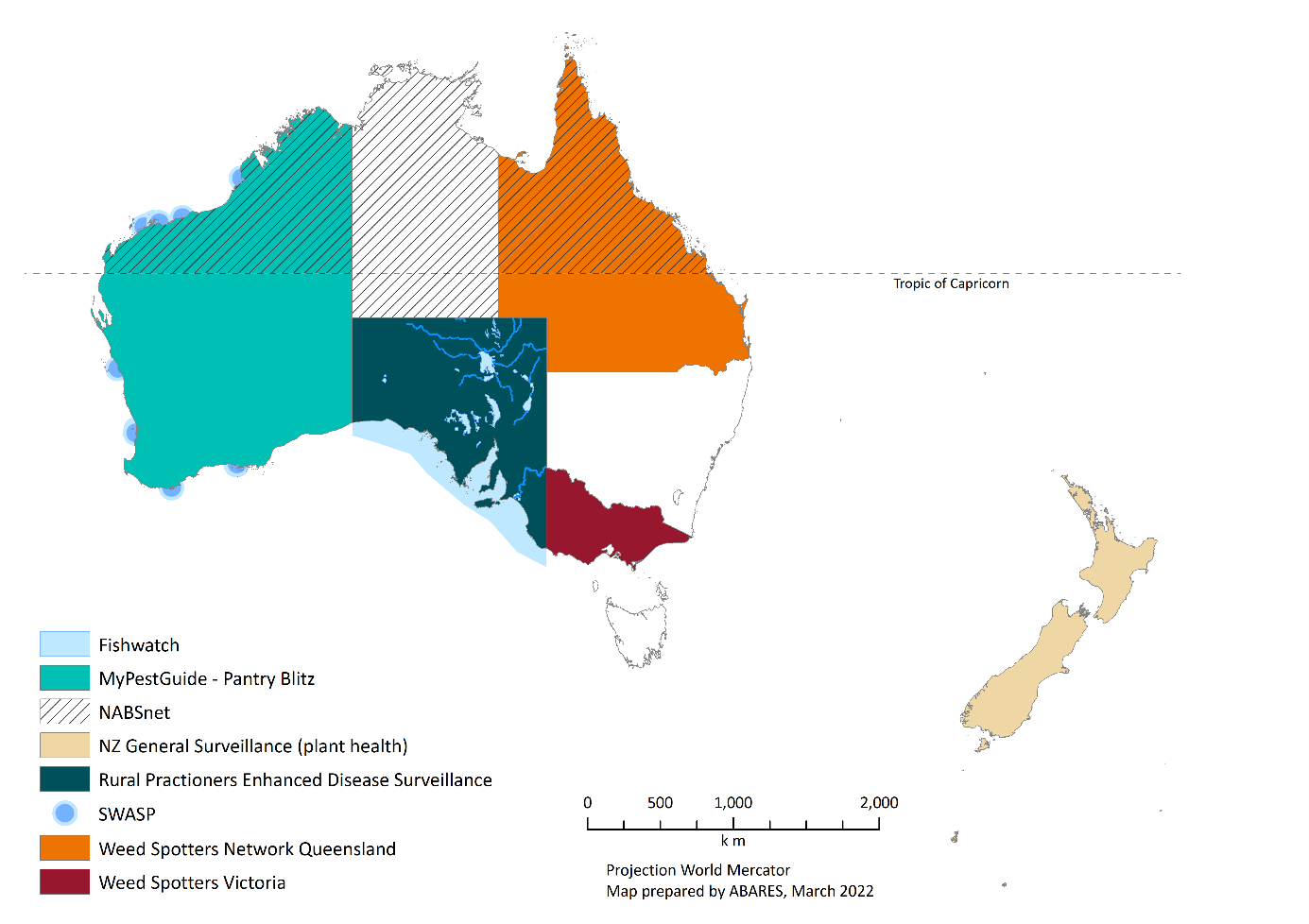Authors: Heleen Kruger, Jen Ticehurst and Alex van der Meer Simo
Summary
This research report presents the lessons learned from nine case studies of general surveillance programs in Australia and New Zealand across biosecurity sectors, covering animal, marine, plants and weeds, as well as one case study focusing on engaging with Indigenous Communities about general surveillance. It provides the main evidence base for the General Surveillance Program Guidelines that were developed to support the design, implementation and monitoring of general surveillance programs.
Case study locations
A multiple case study approach was used to explore the system components, including the actors involved and their relationships; the infrastructure used (such as reporting tools and databases); the institutions (the rules and regulations that shape and support a program); and the biophysical aspects (the pests, weeds and/or diseases involved and their environments).
A case study approach involving multiple cases was chosen as each case study is in effect a trial of a general surveillance program under different conditions. Together they contribute to identifying principles about what works and what does not work in making these programs fit for purpose, cost-effective and sustainable.
Systems thinking assisted with identifying interactions that occur within and between the general surveillance program components (or parts thereof) as well as the broader context. These interactions are important to understand to ensure these programs deliver as intended, including understanding feedback loops, overcoming information asymmetry, minimising unintended consequences and utilising potential leverage points.
Download the Research Report
Making general surveillance programs work - Findings from nine case studies (PDF 4.01 MB)
Making general surveillance programs work - Findings from nine case studies (DOCX 5.47 MB)
Research report and Guidelines cross referencing tool
While the Research Report forms the main evidence base for the Guidelines, the structure of the two documents differs considerably. To help readers of the Guidelines find background information in the more detailed Research Report, a cross referencing tool is provided below.

